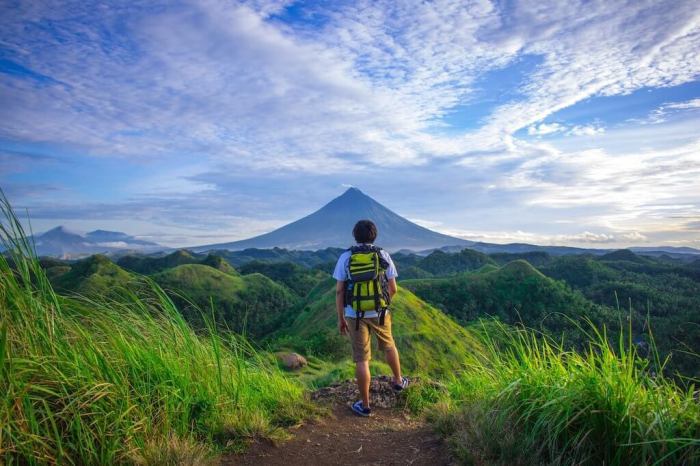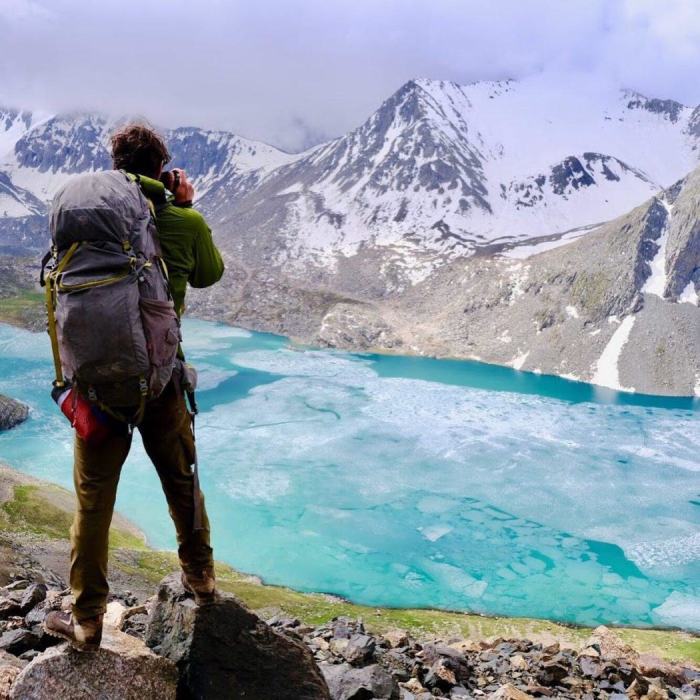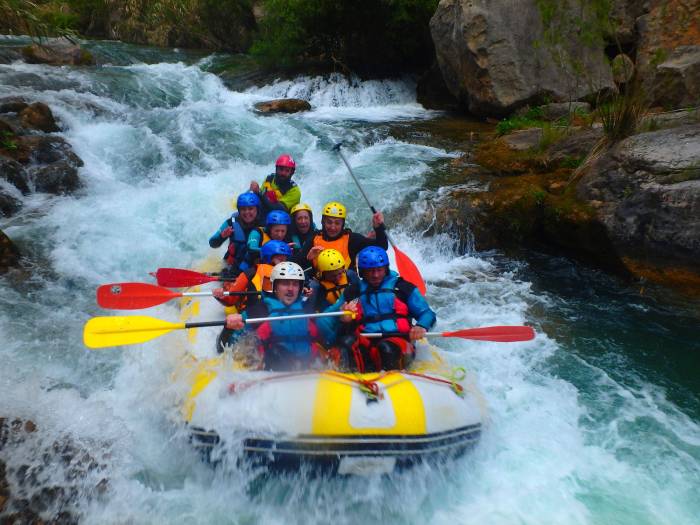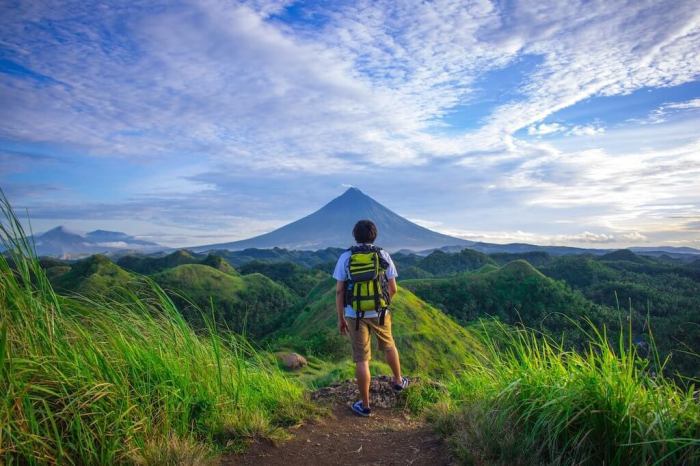Places to visit for adventure – Get ready to embark on an exhilarating journey as we unveil the ultimate destinations for adventure enthusiasts. From heart-pounding treks to adrenaline-pumping water sports, prepare to explore places that will leave an unforgettable mark on your soul. Join us as we delve into the world of adventure travel, where every step brings a new challenge and every experience ignites your passion for the unknown.
Whether you’re a seasoned thrill-seeker or a curious traveler seeking an escape from the ordinary, we’ve got you covered. Discover hidden gems, bucket-list destinations, and off-the-beaten-path adventures that will push your limits and create memories that will last a lifetime. Let’s dive right in and explore the places that will awaken your inner adventurer!
Adventure Travel Destinations
Adventure enthusiasts, get ready to embark on an adrenaline-pumping journey! We’ve compiled a list of thrilling destinations that will challenge your limits and create memories that will last a lifetime. From heart-stopping treks to exhilarating water sports, these off-the-beaten-path locations offer unique experiences for every type of adventure seeker.
Extreme Sports Havens
For those who crave the ultimate adrenaline rush, these destinations offer a range of extreme sports that will test your skills and courage:
- Chamonix, France: Home to Mont Blanc, the highest peak in Europe, Chamonix is a paradise for mountaineers and skiers. Tackle the iconic Aiguille du Midi cable car for breathtaking views and access to challenging off-piste slopes.
- Queenstown, New Zealand: Known as the “Adventure Capital of the World,” Queenstown is a hub for bungee jumping, skydiving, and jet boating. Experience the heart-stopping Nevis Swing, a 160-meter freefall that will leave you breathless.
- Interlaken, Switzerland: Nestled amidst the Swiss Alps, Interlaken offers a variety of adventure activities, including paragliding, canyoning, and white-water rafting. Take a scenic flight over the Jungfraujoch and witness the stunning Eiger and Mönch mountains.
Wildlife Encounters
If you’re passionate about wildlife, these destinations will provide you with unforgettable encounters with nature’s wonders:
- Galapagos Islands, Ecuador: A UNESCO World Heritage Site, the Galapagos Islands are home to a diverse array of unique wildlife, including giant tortoises, marine iguanas, and sea lions. Snorkel or dive to witness the underwater wonders of this enchanting archipelago.
- Serengeti National Park, Tanzania: Embark on a safari in the Serengeti and witness the annual wildebeest migration, one of the most spectacular wildlife events on Earth. See lions, elephants, zebras, and countless other animals roaming freely in this vast and untamed wilderness.
- Amazon Rainforest, Brazil: Explore the world’s largest rainforest and immerse yourself in its incredible biodiversity. Go on guided tours, trek through dense jungles, and spot exotic animals such as macaws, monkeys, and jaguars.
Epic Treks and Hikes
For those who love to push their physical limits, these destinations offer challenging treks and hikes that will reward you with stunning scenery and a sense of accomplishment:
- Mount Everest Base Camp Trek, Nepal: Embark on a life-changing trek to the base of the world’s highest mountain, Mount Everest. Experience the breathtaking beauty of the Himalayas, encounter local Sherpa communities, and witness the climbers’ preparations for their summit attempts.
- Inca Trail to Machu Picchu, Peru: Trek through the ancient Inca Trail and discover the ruins of Machu Picchu, the “Lost City of the Incas.” Hike through lush rainforests, ascend steep mountain passes, and marvel at the architectural wonders of this iconic historical site.
- Torres del Paine Circuit, Chile: Explore the stunning landscapes of Patagonia on the Torres del Paine Circuit. Hike through pristine forests, past glacial lakes, and up to the base of the majestic Torres del Paine peaks, offering breathtaking panoramic views.
Adventure Activities: Places To Visit For Adventure
The world of adventure travel offers a plethora of activities that cater to every skill level and thirst for adrenaline. From beginner-friendly experiences to extreme challenges that push the limits of human endurance, there’s something for every thrill-seeker.
Adventure activities can be broadly categorized based on skill level, ranging from beginner-friendly to extreme. Each activity presents its own unique physical and mental challenges, demanding a combination of strength, agility, and determination.
Get ready to explore the wildest places on Earth! From zip-lining through lush rainforests to scaling towering mountains, there’s no shortage of adventure to be had. And if you’re looking for the ultimate family bonding experience, check out our guide to top family adventure vacations.
We’ll show you how to create memories that will last a lifetime while exploring the world’s most thrilling destinations.
Beginner-Friendly Activities
These activities are ideal for those new to adventure travel or seeking a more relaxed experience. They typically require minimal physical fitness and technical skills, making them accessible to a wider range of participants.
- Hiking: Explore scenic trails, immersing yourself in nature’s beauty while enjoying a moderate workout.
- Kayaking: Paddle through tranquil waters, taking in stunning coastal or riverine landscapes.
- Snorkeling: Discover the underwater world, marveling at vibrant coral reefs and marine life.
Intermediate Activities
As you progress in your adventure journey, you may seek activities that demand a bit more physical exertion and technical proficiency. These activities are suitable for those with a reasonable level of fitness and some prior experience.
- Rock climbing: Ascend sheer rock faces, testing your strength, balance, and problem-solving abilities.
- White-water rafting: Navigate raging rivers, encountering thrilling rapids and stunning scenery.
- Mountain biking: Conquer challenging trails, combining physical endurance with technical skills.
Extreme Activities
For the most experienced and daring adventurers, extreme activities offer the ultimate adrenaline rush. These activities require exceptional physical fitness, technical expertise, and a willingness to push your limits.
- Skydiving: Experience the thrill of freefall from thousands of feet above the ground.
- BASE jumping: Leap from fixed objects, such as cliffs or buildings, into the void below.
- Heli-skiing: Ascend remote mountain peaks via helicopter, then descend through untouched powder.
Activity Summary
| Activity | Difficulty | Duration | Age Range |
|---|---|---|---|
| Hiking | Beginner | Half-day to multi-day | 5+ |
| Kayaking | Beginner | Half-day to full-day | 8+ |
| Snorkeling | Beginner | Half-day to full-day | 8+ |
| Rock climbing | Intermediate | Half-day to full-day | 12+ |
| White-water rafting | Intermediate | Half-day to full-day | 12+ |
| Mountain biking | Intermediate | Half-day to multi-day | 12+ |
| Skydiving | Extreme | Half-day | 18+ |
| BASE jumping | Extreme | Half-day | 18+ |
| Heli-skiing | Extreme | Full-day | 18+ |
Adventure Gear and Equipment
Embarking on an adventure requires proper preparation, and gear is paramount. From backpacks to tents and sleeping bags, selecting the right equipment can make or break your experience. This comprehensive guide will equip you with the knowledge to choose the best gear for your adventure, ensuring safety, comfort, and unforgettable memories.
The type of adventure you embark on will determine the gear you need. Hiking, climbing, and kayaking each require specialized equipment. Prioritize safety by choosing high-quality gear from reputable brands. A well-maintained and packed backpack is crucial for carrying your essentials. Consider the pros and cons of different gear options, such as backpacks, tents, and sleeping bags, to find the perfect fit for your needs. Ethical considerations should also guide your gear choices, ensuring sustainability and minimizing environmental impact.
Essential Gear for Hiking
Hiking demands durable and comfortable gear. A sturdy backpack is essential for carrying supplies, water, and food. Hiking boots provide ankle support and traction on rugged trails. Trekking poles enhance stability and reduce strain. Other essential items include a headlamp, whistle, first-aid kit, and water purification system.
Essential Gear for Climbing
Climbing requires specialized equipment for safety and performance. A climbing harness distributes weight evenly and keeps you secure. Climbing shoes provide grip and support on rock surfaces. A belay device controls the rope during ascents and descents. Helmets protect your head from falling debris. Other essential gear includes carabiners, quickdraws, and chalk.
Essential Gear for Kayaking
Kayaking requires gear that keeps you afloat and protected from the elements. A kayak provides buoyancy and stability on the water. A life jacket is essential for safety. A paddle propels you through the water. Other essential gear includes a spray skirt to keep water out of the kayak, a bilge pump to remove excess water, and a whistle for signaling in case of emergencies.
Packing and Transporting Gear
Proper packing is crucial for comfort and efficiency. Distribute weight evenly in your backpack to avoid strain. Use compression straps to reduce bulk. Pack essential items within easy reach. Transport gear securely using straps, bungee cords, or cargo nets to prevent damage or loss.
Maintaining and Repairing Gear
Regular maintenance extends the lifespan of your gear. Clean and dry gear after use to prevent damage. Inspect gear for wear and tear, and repair any issues promptly. Carry basic repair kits for minor fixes in the field. By maintaining your gear, you ensure it’s ready for your next adventure.
Ethical Considerations
Consider the environmental impact of your gear choices. Choose sustainable materials and brands that prioritize ethical practices. Support local businesses and artisans who create high-quality gear with minimal environmental footprint.
Adventure Travel Planning
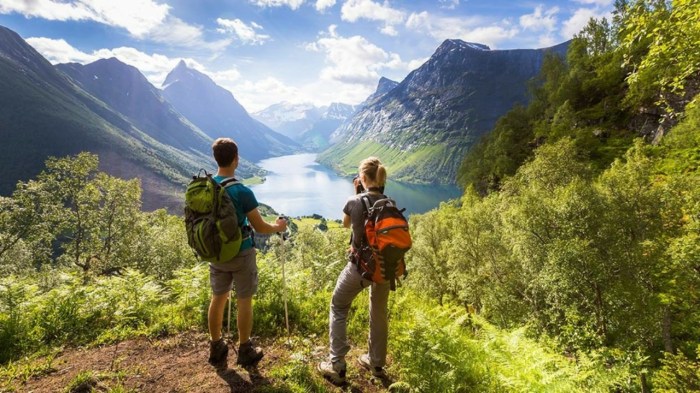
Planning an adventure trip can be daunting, but with the right tips and strategies, you can create an unforgettable experience. From budgeting to itinerary creation and risk assessment, here’s everything you need to know to plan the perfect adventure trip.
Before you start planning, it’s important to set a budget. Adventure travel can be expensive, so it’s important to be realistic about what you can afford. Once you have a budget, you can start to research destinations and activities that fit your interests and budget.
Itinerary Creation
Once you have a budget and a general idea of where you want to go, it’s time to start creating an itinerary. It’s important to be flexible with your itinerary, as things can change when you’re traveling. However, having a general plan will help you make the most of your time.
When creating your itinerary, be sure to include time for rest and relaxation. Adventure travel can be tiring, so it’s important to build in some time to relax and recharge.
Risk Assessment
Before you embark on your adventure trip, it’s important to assess the risks involved. This includes assessing the risks of the activities you’ll be participating in, as well as the risks of the destination you’ll be traveling to.
When it comes to places to visit for adventure, the world is your oyster. Whether you’re looking to hike through the Amazon rainforest, climb Mount Everest, or go white-water rafting on the Colorado River, there’s an adventure out there for you.
And if you’re looking for a travel company to help you plan your next adventure, look no further than world of adventures travel and tours. They specialize in creating custom adventure tours that are tailored to your interests and budget.
So what are you waiting for? Start planning your next adventure today!
Once you’ve assessed the risks, you can take steps to mitigate them. This may involve purchasing travel insurance, getting vaccinated, or taking a first-aid course.
Finding Local Guides and Tour Operators
If you’re not comfortable planning your own adventure trip, you can hire a local guide or tour operator. Local guides and tour operators can help you with everything from planning your itinerary to booking activities and accommodations.
When choosing a local guide or tour operator, it’s important to do your research. Read reviews online and ask for recommendations from friends or family.
Importance of Adventure Travel Insurance
Adventure travel insurance is crucial for safeguarding yourself during high-risk activities like rock climbing, scuba diving, and mountaineering. It provides financial protection against unexpected events that could lead to medical expenses, trip disruptions, or lost gear.
Types of Coverage
Adventure travel insurance typically covers:
– Medical expenses: Emergency medical treatment, hospitalization, and medical evacuation
– Trip cancellation: Reimbursement for non-refundable expenses if the trip is canceled or delayed
– Lost or stolen gear: Coverage for the replacement or repair of lost or stolen personal belongings
– Emergency evacuation: Costs associated with evacuating you from a remote or dangerous location
– Adventure Travel Safety
Adventure travel can be an exhilarating and rewarding experience, but it also comes with inherent risks. Staying safe while on an adventure trip requires careful planning and preparation. This includes understanding wilderness survival skills, knowing how to administer first aid, and having a plan for emergency communication. It is also important to respect local customs and traditions, and to be aware of the potential hazards associated with different types of adventure activities.
Essential Safety Gear
Every adventure traveler should carry a basic safety kit that includes the following items:
- First-aid kit
- Whistle
- Flashlight
- Knife
- Fire starter
- Water purification tablets
- Map and compass
- Emergency shelter
Assessing and Managing Risks
Before embarking on any adventure trip, it is important to assess the risks involved and develop a plan for managing them. This includes:
- Researching the destination and its potential hazards
- Choosing activities that are appropriate for your skill level
- Bringing the necessary safety gear
- Having a plan for emergency communication
- Informing someone of your itinerary
Respecting Local Customs and Traditions
When traveling in a foreign country, it is important to respect local customs and traditions. This includes dressing appropriately, being mindful of noise levels, and avoiding disrespectful behavior. It is also important to be aware of the local laws and regulations, and to avoid doing anything that could put yourself or others at risk.
Safety Tips for Different Types of Adventure Activities
The following table provides safety tips for different types of adventure activities:
